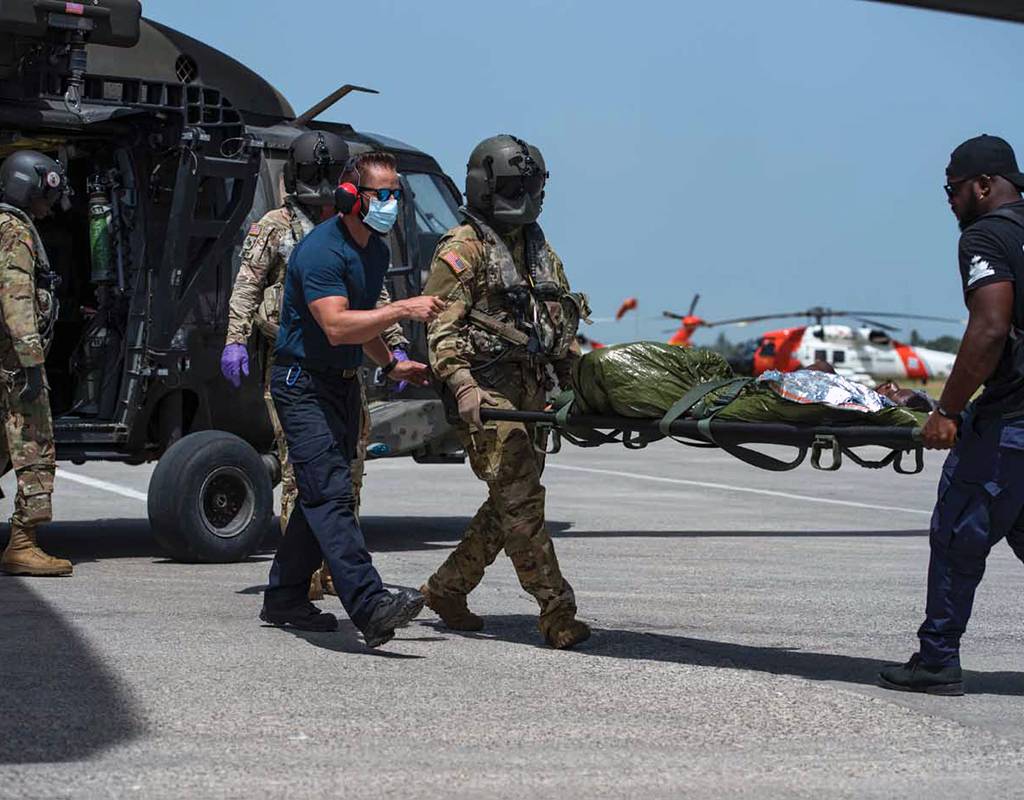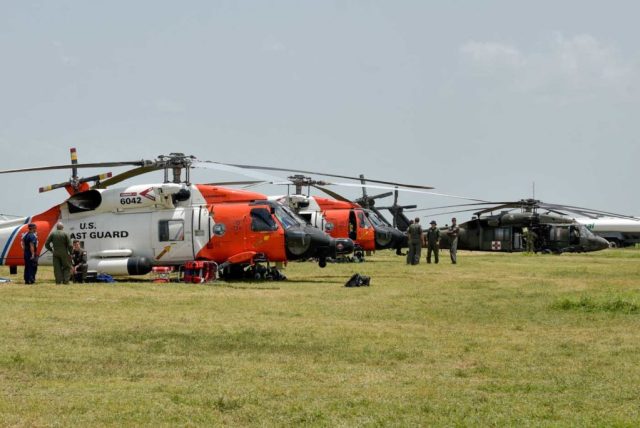
When a 7.2 magnitude earthquake hit the coast of Haiti in August, Haiti Air Ambulance sprung into action, caring for the injured while using its local knowledge to help coordinate the international relief effort.
Shortly before 8:30 a.m. Eastern Daylight Time on Aug. 14, 2021, a 7.2 magnitude earthquake struck the Tiburon Peninsula of Haiti, approximately 90 miles (150 kilometers) west of the highly populated Haitian capital of Port-au-Prince. Twice as powerful as the 7.0 magnitude quake that struck 15 miles south of the capital and killed more than a quarter of a million people in 2010, this quake struck in a fairly isolated and rural area, causing widespread infrastructure damage to buildings, roads, and services throughout the southwest of the country. While the population was far more sparse than that affected in the 2010 quake, those who survived the violent shaking and building collapses faced an almost equal threat — very little access to medical support.

Haiti Air Ambulance (HAA), a 501 (c)(3) non-profit organization, is the only air medical helicopter operation serving Haiti’s entire population of 11 million people. Not long after the shaking ended, the HAA team jumped into action, calling contacts on the peninsula and surrounding areas to determine where the most critical needs were and how to get those patients to care.
“The earthquake happened in a very rural area where, in normal times, it can be a three- to five-hour walk to the closest clinic,” said HAA program director Cory Oaks. “It was critical we help get these survivors to care. We were in a unique position to do that because we fly here every day. We know the clinic staff. We know where injured people typically go. That’s not the intimate information incoming aid organizations would have. Because of our position, we could start providing support immediately.”

Providing that support wasn’t as simple as flying in, loading a patient, and whisking them off to the country’s only trauma center in Port-au-Prince. The month before, Haiti’s president, Jovenel Moïse, was assassinated, throwing an already unstable government into further dysfunction. The new leadership vacuum, paired with severe poverty and rival gang violence, make overland travel and even landing a helicopter dangerous. As a further complication, a tropical storm blew in two days after the earthquake, slowing operations and increasing damage.
Familiar with the countryside and skilled at fast pivots to navigate the constantly changing Haitian political and physical landscape, HAA was able to help prepare for incoming large-scale support. Shortly after the earthquake, its Bell 407 flew over the peninsula’s airfields to determine if they were safe for airplanes to transport people and supplies. The helicopter then began moving medical partners and supplies to secure locations where they could begin helping patients. Working with HERO Client Rescue and other aid organizations, HAA transported patients when they could safely land for two days before reinforcements arrived from the U.S. Coast Guard and U.S. Navy once the tropical storm passed.
HAA then pivoted to running a triage, treatment, and transport emergency triage site based at Port-au-Prince Airport. As Coast Guard and Navy helicopters brought in patients, HAA provided first responder care, identifying those needing transport, coordinating with receiving hospitals, and arranging it with either the helicopter or ground ambulances.

“We saw a lot of femur and pelvis fractures and head injuries, but after a couple of days we began to see more than trauma,” Oaks said. “There is a very large Voodoo presence in Haiti. We saw a lot of patients who had seen their Voodoo priest who packed their wounds with dirt, leaves, and herbs, which puts them at a higher risk of infection. Others were still being dug out of the rubble several days after the earthquake and were coming in dehydrated with injuries, post-injury infections, and tetanus. These people lived days from a medical clinic and most are not vaccinated against tetanus. For them, we began adding fluids for dehydration, antibiotics, and tetanus treatments.”
After two days of support and initial transport, HAA provided triage and treatment for 10 days, serving more than 240 people and transporting 49 with the helicopter.
Bringing HEMS to Haiti
Founded in 2014 by a private donor and helicopter emergency medical services (HEMS) professional, HAA was developed after the devastating 2010 earthquake revealed to the world how limited emergency medical transportation is in the country. HAA was set up to support Haiti’s people by operating entirely from charitable donations. Patients are flown regardless of their ability to pay. To date, the charity covers an average of 90 percent of annual flights.
HAA owns one Bell 407 EMS helicopter, which is operated in daytime visual flight rules conditions under FAA regulations from its facility at the Port-au-Prince airport by Classic Air Medical of Salt Lake City, Utah. It is currently working toward acquiring a second Bell 407.
Today, HAA transports patients from designated safe landing sites and provides interfacility transports seven days a week, with two shifts of Classic Air Medical pilots and mechanics and a team of HAA leadership, communications, and medical professionals. HAA is also supported by a rotation of volunteer HEMS flight nurses and EMTs who volunteer a week to three weeks at a time to fly with the service.
“It’s a very different environment in Haiti,” Oaks explained. “We can’t operate like a helicopter EMS operator would in the U.S. We can’t launch when there is a call. There are a lot of security concerns, making it unsafe to land anywhere but secure landing sites we’ve predesignated. It can take hours to days to set up a safe way to transport a patient. We also transport patients we’d never transport in a helicopter in the States, like malnutrition, broken bones, premature babies — because of the road infrastructure. In fact, 40 percent of our cases are pediatric due to the extreme malnutrition in the country. It can otherwise be a 12-hour drive for some of these patients, if the gangs have the roads open.”
To help provide the highest level of support, HAA’s Bell 407, completed by PAC International, includes a Spectrum Aeromed patient stretcher and base assembly with Lifeport pilot barrier and medical floor, 110 VAC shore power, patient oxygen system, a portable ultrasound machine, and EPOC, which allows the medical teams to perform pre-hospital blood gassing. The latter two machines proved exceptionally valuable during the earthquake aftermath, allowing the HAA medical teams to better triage, diagnose, and treat patients prior to transport.

In September of this year, HAA proudly completed its 400th patient transport for 2021 and its 1,000th transport in the history of the operation.

